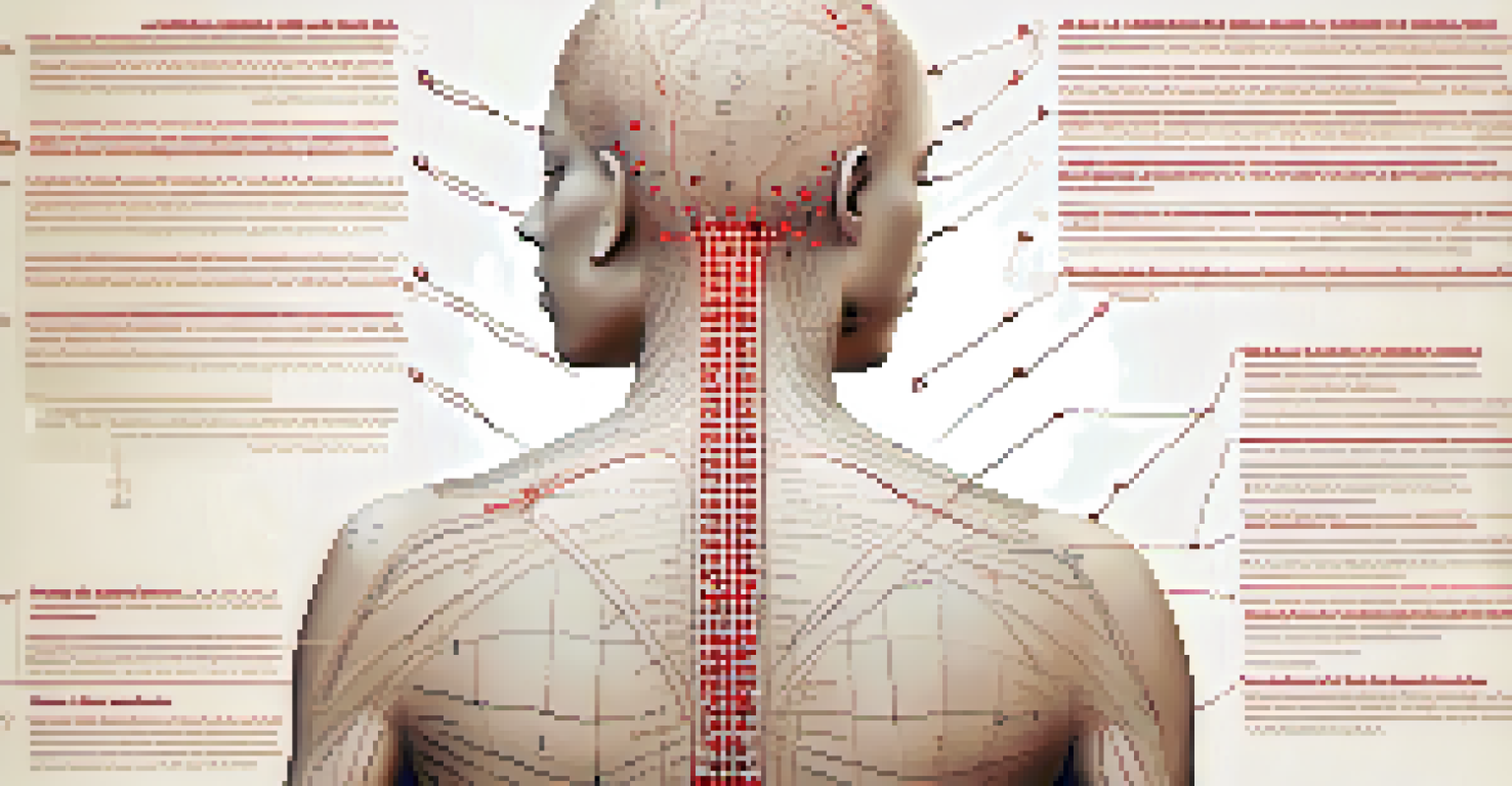Complementary Therapies: Acupuncture and Pain Relief

What is Acupuncture and How Does It Work?
Acupuncture is an ancient practice rooted in Traditional Chinese Medicine (TCM). It involves inserting thin needles into specific points on the body to stimulate energy flow, or 'qi'. This process aims to restore balance and promote healing, which can be particularly effective for pain management.
Acupuncture is a holistic approach to healing that emphasizes the body's innate ability to heal itself.
Many people are surprised to learn that acupuncture isn't just about needles; it's about the body's natural ability to heal itself. By targeting specific areas, acupuncture can influence the nervous system, helping to release endorphins—the body's natural painkillers.
In essence, acupuncture helps to recalibrate the body's communication systems, making it an insightful option for those looking to alleviate pain without relying solely on medication.
The Science Behind Acupuncture and Pain Relief
Research into acupuncture has grown significantly, revealing its potential in pain relief. Studies indicate that acupuncture can effectively reduce chronic pain conditions, including arthritis, back pain, and migraines. This is largely due to its ability to enhance blood flow and reduce inflammation.

One study published in a renowned medical journal found that acupuncture provided considerable relief for patients suffering from chronic back pain. Participants reported decreased pain levels and improved mobility after several sessions.
Acupuncture Enhances Pain Management
This ancient practice stimulates the body's natural healing processes, making it an effective option for pain relief.
While further studies are needed, the existing evidence suggests that acupuncture can be a valuable alternative or complementary therapy for managing pain, supporting the notion that ancient practices can align with modern science.
Common Conditions Treated by Acupuncture
Acupuncture is versatile and has been used to treat a variety of conditions. Common ailments include headaches, neck pain, and joint pain, but it can also help with stress, insomnia, and digestive issues. This makes acupuncture appealing to those seeking holistic approaches to their health.
The greatest medicine of all is to teach people how not to need it.
For instance, many individuals suffering from migraines find that regular acupuncture sessions can help reduce the frequency and intensity of their headaches. The targeted stimulation of pressure points may alleviate tension and improve overall well-being.
Moreover, acupuncture can complement conventional treatments, providing a comprehensive approach to health that addresses both physical and emotional aspects of pain.
What to Expect During an Acupuncture Session
If you're considering acupuncture, it's natural to wonder what happens during a session. Typically, you’ll start with a consultation where the practitioner assesses your health and pain history. This personalized approach ensures that the treatment is tailored to your specific needs.
During the session, you’ll lie down comfortably while the practitioner inserts needles at various points. Many people find the process surprisingly relaxing, with some even falling asleep during treatment. The needles are very thin, and most patients report feeling little to no discomfort.
Holistic Approach to Health
Acupuncture addresses both physical symptoms and emotional well-being, offering a comprehensive method for managing pain.
After the session, you may feel a sense of calm and relief as your body begins to respond to the treatment. It’s common to experience a gradual reduction in pain over several sessions, reinforcing the idea that acupuncture is a journey, not a quick fix.
Benefits of Acupuncture for Pain Management
One of the most significant benefits of acupuncture is its ability to provide relief without the side effects often associated with pain medications. Many patients appreciate that acupuncture can help manage their pain in a natural and holistic way, reducing their reliance on pharmaceuticals.
Additionally, acupuncture promotes relaxation, which can also play a crucial role in pain management. By addressing both physical symptoms and stress levels, patients may find a more comprehensive approach to their health.
Ultimately, acupuncture can empower individuals to take charge of their pain management, providing them with tools to enhance their quality of life.
Safety and Considerations of Acupuncture
When done by a qualified practitioner, acupuncture is generally considered safe. It's important to choose a licensed acupuncturist who uses sterile needles and follows proper hygiene practices. This ensures that you receive the best care while minimizing any risks.
That said, acupuncture may not be suitable for everyone. Individuals with certain health conditions, such as bleeding disorders or skin infections, should consult their healthcare provider before starting treatment. It's crucial to have an open dialogue about your health history.
Safe and Personalized Treatment
When performed by a licensed practitioner, acupuncture is a safe therapy that can be tailored to individual health needs.
In most cases, acupuncture can be safely integrated into a broader pain management plan, offering a complementary therapy that works alongside other treatments.
Getting Started with Acupuncture for Pain Relief
If you're intrigued by the idea of trying acupuncture for pain relief, the first step is to do some research. Look for licensed practitioners in your area who specialize in pain management, and read reviews from other patients to find a good match for your needs.
Before your first appointment, consider jotting down your pain history and any specific questions you may have. This can help facilitate an open discussion with your acupuncturist about your treatment goals and expectations.

Remember, acupuncture is about finding what works for you. The journey may lead to improved pain management and a more balanced approach to health, making it a worthwhile exploration.